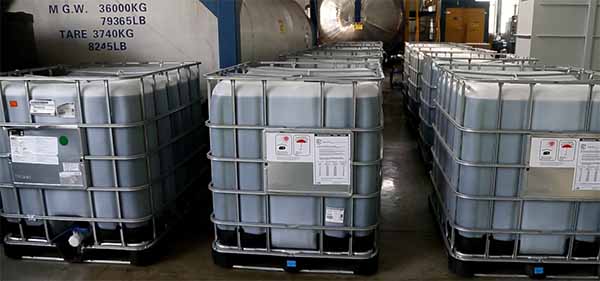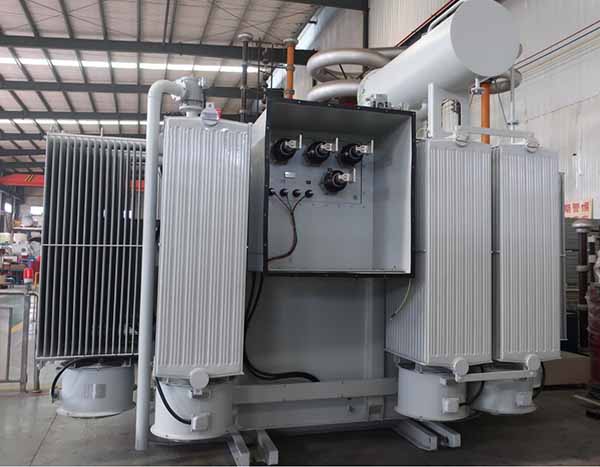With the development of the power industry, how to improve the performance of power equipment and ensure the reliable operation of the power system is an urgent problem that needs to be solved in power production. Therefore, whether the leakage of transformer oil can be timely and thoroughly dealt with has gradually become an important technical indicator to measure the development of the power industry. The phenomenon of oil leakage in oil-immersed distribution transformer is quite common in power system. If there is oil leakage in transformer, it may affect the safe and stable operation of transformer. How to solve the problem of leakage oil of transformer is a big problem in the production practice of power sector for many years.
Whats the transformer oil?
Pure transformer oil is a colorless transparent liquid, its insulation strength is much larger than the air, can be filled with the air gap between the components in the tank, so that the internal insulation medium to maintain good chemical and physical properties, protect the metal to prevent corrosion, maintain the good insulation state of the transformer, in addition, transformer oil also has a good heat dissipation effect, The oil circulation makes the winding and the iron core fully cool and improves the operating conditions, which is an important part of the safe and stable operation of the transformer.


Oil leaks from transformers can pose various risks, both to equipment and the environment. Some of the hazards include:
Transformer oil is flammable. Leaking oil can create a fire hazard, especially if it accumulates near electrical components. In worst-case scenarios, the transformer could overheat and catch fire, leading to catastrophic failures and safety risks.
Oil leaks can lead to significant environmental contamination, particularly if the oil seeps into soil or water sources. This not only harms ecosystems but can also lead to hefty fines and cleanup costs. At Varelen, we stress the importance of leak prevention to minimize such risks.
Oil leaks can compromise the insulation and cooling properties of the transformer, leading to overheating, short circuits, and, ultimately, equipment failure. Regular maintenance and prompt attention to leaks can help prevent such issues.
Transformer oil leaks can happen for various reasons. Understanding the causes can help you address the issue more effectively. Here are some of the main reasons for oil leaks:
1. Temperature effect
The temperature difference between the four seasons where the substation is located is large, the temperature in summer can reach up to more than 40 ° C, and the temperature in winter can be reduced to below -25 ° C, so the expansion and contraction deformation of the metal body is large, especially in winter, the temperature difference between day and night is very large, the temperature at night is very low, the elasticity of the sealing ring at the connection of the transformer is reduced, the volume contraction, resulting in leakage of oil. This situation is the same as the reason why the transformer that does not leak during the original operation will leak after the power failure due to the decrease in temperature.
2. Influence of design structure
Because the transformer body tank and radiator are two relatively independent systems. The radiator is matched with the sealing flange on the oil tank, and is connected to the body oil tank through the transverse connecting pipe and other connecting parts. The oil inlet and outlet pipes between the two are connected through the special butterfly valve of the transformer. Since the total weight of the radiator itself and the transformer oil inside is thousands of kilograms, the connection flange and the butterfly valve bear a lot of weight, and the force received by different parts is not strictly consistent, which is likely to make the body tank flange and the radiator flange are not parallel, resulting in uneven force on the sealing gaskets everywhere, so that the compression amount of the two flanges is small. Where the gap is large, the compression amount is small, it is not easy to achieve uniform compression, and it is easy to leak with the aging and deterioration of the sealing material.
3, sealing structure and sealing problems
As the seals used on the transformer will deteriorate with the increase of the use time, it is easy to harden and break. At the same time, because the sealing of some pipelines is connected with flat flanges, the compression of the sealing ring during installation is too large, resulting in poor overall sealing and loose pipelines.
4. Weld and welding quality
Welding process, poor welding quality and other problems are also important reasons for transformer oil leakage.
Weld cracks, transformer tank factory leakage test, generally rarely found leakage phenomenon, but in the use of the site, leakage is more common, one of the main reasons is that there is a crack around the weld.
5, radiator leakage of oil
Causes of the problem:
The heat dissipation tube of the radiator is usually made by stamping after being flattened by a slotted steel pipe. The bending part and welded part of the heat dissipation tube often produce leakage oil, which is because when the heat dissipation tube is pressed, the outer wall of the tube is subjected to tension, and the inner wall is subjected to pressure, and there is residual stress.
Technical solutions to problems:
After determining the leakage site, the appropriate surface treatment is carried out. First, the titanium steel glue is used for quick sealing for sealing treatment, and the water-oil compatible repair agent is used for reinforcement after curing.
The method of finding the leakage point
There are many reasons for transformer oil leakage, and the phenomena shown are also different. Follow the path - suitable for more obvious oil spills.
When viewing the equipment, first observe the transformer installation position on the ground based on whether there is an obvious new oil trace, if there is, to follow the top of the oil trace to view, and should pay attention to exclude some of the middle of the false point of oil leakage, follow the trail, generally can find the real leakage origin, such as casing CT terminal, casing cap, welding trachoma, pipe root and so on.
Preventing oil leaks is essential for the safety and longevity of transformers. Here are some measures to help prevent and control transformer oil leakage:
Routine inspections are crucial in catching early signs of leaks, corrosion, or gasket wear. Scheduled maintenance checks allow for proactive measures to be taken, such as tightening bolts or replacing old gaskets, before a major leak occurs.
High-quality seals, gaskets, and fittings can significantly reduce the likelihood of leaks. Using corrosion-resistant materials for tanks and components also helps in preventing leaks caused by rust.
Ensure that transformers are installed correctly and handled carefully during transport and installation. Misalignment or physical damage during these processes can cause or exacerbate leaks. Varelen emphasizes proper handling to reduce these risks.
Adding real-time monitoring systems can help detect leaks early. These systems can alert operators to changes in pressure, temperature, or oil levels, allowing for timely intervention. Investing in such technologies can prevent leaks from developing into more significant issues.
Transformer oil leaks are a critical issue that can lead to hazardous situations, equipment failure, and environmental damage if not addressed promptly. Understanding the causes and knowing how to troubleshoot and fix these leaks is essential for maintaining transformer reliability and safety.
In recent years, we have taken a series of measures to prevent leakage of oil, which has greatly reduced the leakage rate of oil after transformer overhaul. Practice has proved that as long as the careful inspection and analysis, pay attention to the quality of installation and maintenance, the transformer leakage oil problem can be completely solved, so as to improve the safety and reliability of transformer operation. Continuous improvement, summary of prevention and control measures, the transformer leakage rate will be greatly reduced, in order to provide protection for the safe operation of the transformer, for enterprises, society and users to achieve economic benefits.
At Varelen, we prioritize rigorous quality control and offer expert support to ensure our transformers operate without issues. If you’re experiencing transformer oil leaks or need advice on maintaining your equipment, don’t hesitate to reach out to our team. Proper maintenance and timely repairs can go a long way in extending the life of your transformers and ensuring safe operation.